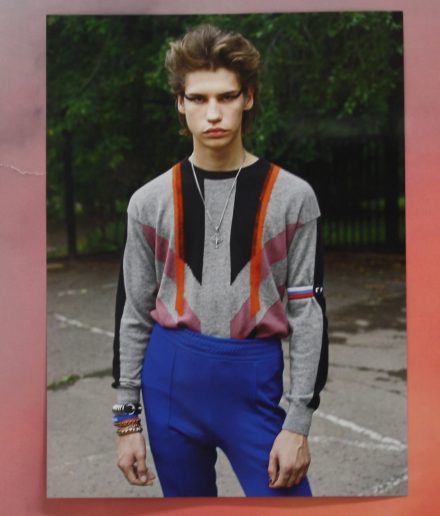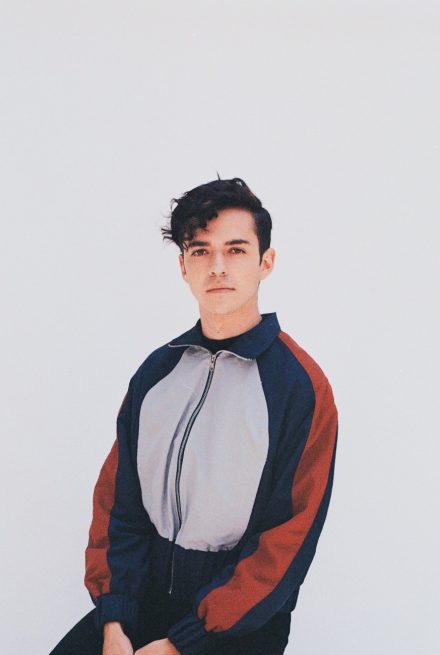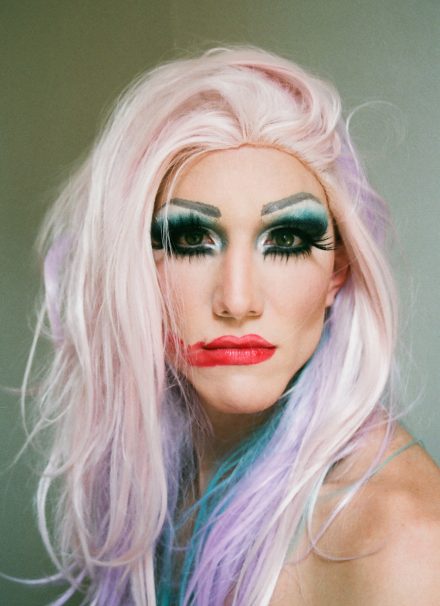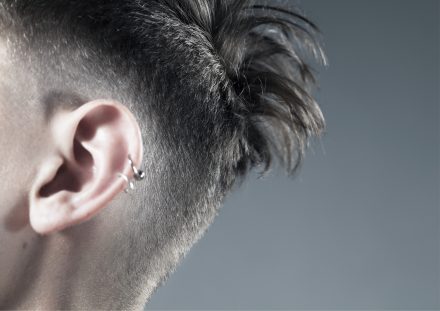On Friday morning, coming from the Berlin Zoo Station, after a longer-than-expected S-Bahn ride, we hurry not to miss the beginning of the press conference of another exhibition. The C/O Berlin Foundation, a gallery for young photography talents, is hosting the first ever single artist presentation by Torbjørn Rødland in Germany. At first glimpse, the press imagery looked promising, though it didn’t reveal much about the exhibition, titled “Back in Touch”. After the greeting and introduction, our eyes meet with the first image, a naked boy in the woods: his upper body bent down as if he were stretching, his hands covered in socks and shoes. Artsy yet somehow familiar, not only for being the one in the announcement, but also due to the bright sunlight shining through the branches and the blurry background. We are immediately reminded of looking at innumerable Instagram posts and fairy-like teenage photography tests. References to social media culture? Moving on, still a little tired, we start feeling a little uncomfortable. Why is he naked in the woods in such an unpleasant position, why the shoes on his hands?

Catching some quick impressions of the photography in the next room, we see the same popular composition: warm colours mixed with beams of sunlight. The artist and the curator have stopped in front of a photo showing a delicious looking cinnamon roll, the sugary frosting reflecting the light. The online culture assumption seemed to be right – they’re chattering about food bloggers at the moment. We observe the attentive audience listening, before our eyes finally move back to the picture. We detect what our first casual view had overlooked: in the middle of the pastry there is a set of teeth, sunken into the dough. By now the conversation has moved on to address the sense of discomfort evoked by the images, and again we can feel it too, this slight awkwardness.

Slowly but surely, we start doubting that the images are just citing commercial photography to create a harmonious patchwork of styles used in advertising and pop culture. Instead, disharmony prevails, and the desire to observe the pieces more closely arises in us. Still, the act of looking remains the same: despite the images’ familiarity at first sight, we gradually notice components that disrupt the coherent impression, making it impossible to unveil a single meaning in them. In the same way, we feel incapable of untangling the significance of the yellow egg in one corner of the next image, this time depicting two pink shoes that remind us of the billboards we saw, just moments before, outside the gallery, in the hustle of the train station. The image, just like the ones we saw before, shows something we are accustomed with, and seems to mix it with a disturbing element.

Continuing our exhibition tour we feel increasingly attracted by the aesthetics of Rødland’s photography, despite, or maybe because of its inexplicability. By now, we have fully dismissed our initial assumption that pop culture lies at the origin of the imagery. Quite to the opposite, it appears as though no one-dimensional interpretation of these photos could possibly grasp their whole meaning; they rather touch us on a deeper emotional level. “I don’t like the word references, in fact I think that commercial style is embedded in the photos, it is a part of them”, the photographer reveals moving further towards a video installation. We like this idea that “popcultural” aesthetics are entangled with the images themselves, and take a closer look at a young girl in a pyjama standing in a room with her bottom exposed, while two old wrinkled hands cut off her underwear with scissors. This time, the uneasiness we sense is not only an emotional one, caused by the disharmonic elements of the image. Rather, we react to the image almost sensually. While we stand there, absorbing the girl’s vulnerability for a moment, it almost feels as if we were in her position, and the uncomfortable feeling were taking over our bodies.

Later again, while looking at skinny and delicate female legs clasped by muscular male arms we perceive a similar physical strangeness. Gazing at the image, we are intrigued by the unsettling notion of violence, faintly blurring the cosy environment. Since all pieces are presented at eye-level, they confront the viewers directly. With their mixture of beauty and disgust they make us feel exposed in a way we are unable to explain completely.

Our tour ends, the curator thanks the audience, and the group dissolves. We take a few more minutes to look at the photos by ourselves before heading down the stairs and leave the building. Back outside, while walking towards the busy train station again, we absorb our environment in greater detail, suspecting something more behind the billboards. Surprised and touched by the Rodland’s photography after all, we think about our otherwise neutral manner of visiting exhibitions with one sentence of the curator in our minds: “It doesn’t feel like we are looking at the images, on the contrary, it seems like they are watching us.”

The exhibition “Back in Touch” by Torbjørn Rødland runs until the 11th of March 2018 at C/O Berlin.




